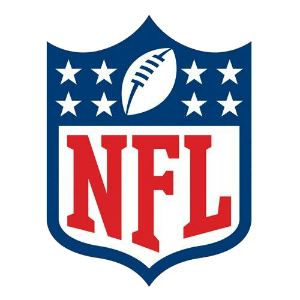
Negative attention in recent years, however, has notched a few chinks in the NFL’s armor. The league has become embroiled in controversy over on-field social justice protests, which have elicited a fiery response from the president. Another major thorn in the NFL’s side? Ongoing revelations of a link between head trauma in football and incurable brain disease.
The NFL recently settled a class-action lawsuit by former players – estimated at over $1 billion – and instituted rule changes aimed at reducing concussions. NFL television ratings fell nearly 10 percent last season. And parents are even having second thoughts about letting their children play the sport; participation in tackle football has dropped significantly at the little league and high school levels.
Socionomic think tank analyst Chuck Thompson says that the nation’s negative social mood played an important role in the exposure and progression of the NFL’s concussion scandal.
“Negative mood fuels the uncovering and outing of scandals,” says Thompson, senior analyst at the Socionomics Institute (www.socionomics.net). “Society’s appetite for scandals skyrockets when it’s feeling pessimistic.”
Thompson says the best indicator of a country’s social mood is its stock market. Within months of the October 2002, March 2009 and January 2016 lows in the Dow Jones Industrial Average, scandalous discoveries about football’s link to head injuries, or negative public awareness campaigns devoted to revealing those discoveries, emerged. “The National Football League succumbed to pressure, made historic admissions and then took steps to compensate former players and reduce head-injury risk for current players.”
Thompson outlines four major phases of the scandal:
- Dr. Omalu’s discovery. In late 2002, while the DJIA was in the midst of a 38% decline, Dr. Bennett Omalu discovered that former NFL player Mike Webster suffered from an incurable neurological disease linked to repeated head trauma called chronic traumatic encephalopathy (CTE). Omalu and his colleagues issued the first scholarly report on CTE on American football players in the journalNeurosurgery. The NFL asked Neurosurgery for a retraction, but the journal declined. “Meanwhile, evidence for a link between football and CTE continued to mount,” Thompson says.
- The Dow and faith in football fall. The Dow Jones Industrial Average lost 54 percent of its value over a 15-month period in the financial crisis. “With mood reaching a negative extreme, researchers in late January 2009 announced more CTE findings in former NFL players,” Thompson says. The NFL continued a defiant tone, but the pressure for change was growing.
- The NFL acts. In December 2009, the NFL conceded publicly that concussions can lead to long-term brain problems. Over the next few years, it settled a massive lawsuit brought by thousands of former players, began rule changes to discourage hits to the head, and announced a new sideline concussion assessment protocol. “From 2010-15 as mood trended positively, the NFL became more conciliatory toward former and current players,” Thompson says.
- Market correction and more NFL unrest. Stocks headed down in late 2015 and so did the NFL’s image. That December, the movie Concussion detailed the NFL’s misdeeds. “Then in March 2016, the NFL faced head-injury heat again,” Thompson says, “both from the public and Congress.”
“If social mood trends negatively, it will likely expose football to more scandalous revelations,” Thompson says. “One area to keep an eye on is football equipment vendors and manufacturers. They could get hit with some big lawsuits.”
About Chuck Thompson
Chuck Thompson is a senior analyst at the Socionomics Institute (www.socionomics.net), a think tank dedicated to using data on social mood to understand and anticipate social trends. Thompson, who joined the Institute in 2010, has spent more than a quarter-century studying and writing about personal finance and cultural trends. He also served as a writer and editor in the radio and newspaper industries for eight years prior to making the jump to finance. His social mood research has addressed such topics as international affairs, war, movies, television, music, science and religion.










